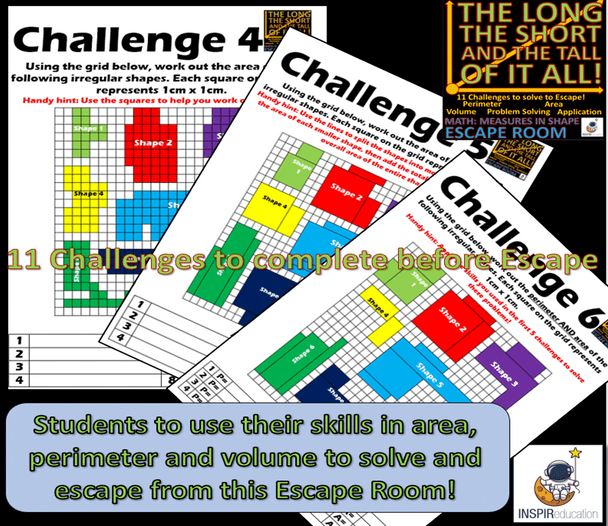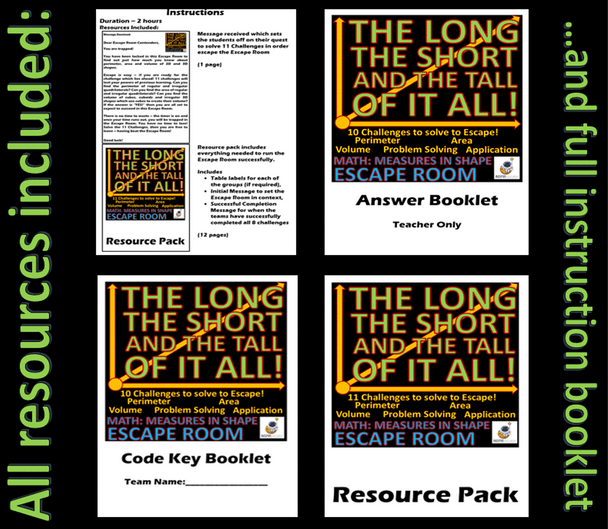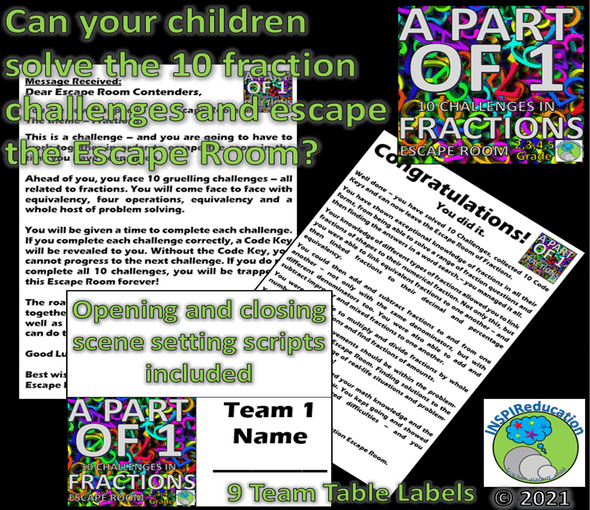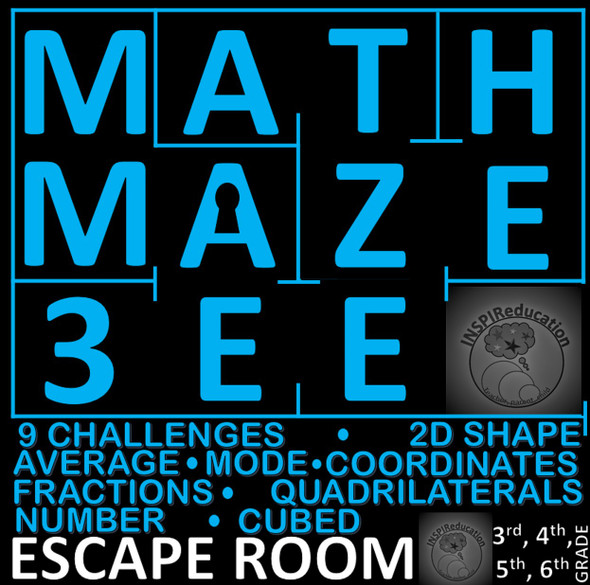Description
Using an Escape Room to develop curriculum knowledge within perimeter, area and volume is an exciting activity that will inspire learners from 2nd Grade to 5th Grade.
The curriculum content of this Escape Room is linked to:
- Perimeter of quadrilaterals
- Perimeter of irregular shapes
- Area of quadrilaterals
- Area of irregular shapes including compound shapes
- Volumes of cubes and cuboids (counting cubes)
- Volumes of cubes and cuboids using length, width and height
- Problem solving volume of irregular shapes used cubes
- Problem solving of perimeter and area finding missing measures and application of skills
The aim of the Escape Room is to provide jeopardy for the students to work under pressure to solve 11 challenges to use their and practice their knowledge and skills in area, perimeter and volume of 2D and 3D shapes. The 11 Challenges within this Escape Room will support and embed these math skills.
Before beginning, you will need to prepare the following (all of which are included within this product):
- A copy of the Pupil Workbook for each group
- A set of table team names for every group – prepared beforehand and given to each group to set up their own working space
- Initial Starting Script sharing the problem to the children
- Completion Script celebrating the completion of the challenge
Students will need some prior knowledge of identifying and working out perimeter, area and volume in order to achieve success – and therefore this resource makes a great activity to embed skills or use as assessment at the end of a unit.
The activity begins by the teacher reading the Initial Message received. It clearly tells the students the expectations of the activity, that they have a set amount of time (teacher defined) to solve 11 Challenges within the area of perimeter, area and volume which will include problem solving skills also. What follows are 11 Challenges which they must work successfully through, one by one. Once achieved – the Escape Room is completed and the students may leave the Escape Room successful!
After the 11th successful activity – the teacher can read the final script which reviews the learning the students have undertaken as they have completed each of the challenges. This script, together with team labels and the opening challenge script are contained within the Resource Pack.
Each activity focuses and builds the children’s knowledge of perimeter, area and volume.
The 11 activities are based on the following outcomes:
- Perimeter of simple quadrilaterals
- Perimeter of more complex, irregular shapes
- Area of squares and rectangles
- Area of compound 2D shapes
- Area and Perimeter of more complex, compound shapes
- Volume of simple cubes and cuboids
- Volume of more complex cubes and cuboids using length, width and height to solve the volume
- Volume of irregular shapes using cubes to support solutions
- Problem solving – identifying missing measures in order to work out area and perimeter in complex shapes
- Problem solving – volume of irregular and complex 3D shapes
When all 11 activities are completed, and the students have successfully completed each one, the final celebratory script can be read which reviews the learning and informs the students that they can leave the Escape Room!
Setting up the Escape Room
1. Children should be split into groups of no more than four and be placed in their own workspace.
2. Review their own knowledge of perimeter, area and volume.
3. Each group should have a Code Key Booklet and decide on a team name
4. Read the Initial Message to the children to set the challenge in context. Discuss what this means, and what the activity entails.
5. Turn to Code Key 1. Agree with the children a set time to complete the problem in – this ensures that the children stay on task and maintains the Escape Room element of working under pressure.
6. At the end of the time, children should have filled in the Code Key in their booklet. The teacher can then check the accuracy of all the groups and talk through the responses the children should have.
7. Move on through the remaining challenges until all 11 have been completed.
8. For those groups who have been successful, they are then able to read the completed statement where they find out if they have escaped the Escape Room!
There are other ways of running Escape Room activities, for example, each activity could be set up on 7 tables and the children then move from table to table completing the activity.
The Escape Room should last for at least 2 hours.
We hope that your children enjoy this Escape Room.
Best wishes
INSPIReducation
























